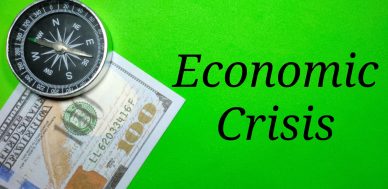U.S. Economy Looks Great on Surface, But Details Foretell a Scary Tale
On the surface, everything looks great in the U.S. economy. But don’t just look at the surface; pay attention to the details. There are problems brewing, and the U.S. economy could face headwinds.
Understand that economic data like gross domestic product (GDP) are lagging economic indicators. They tell us what has already happened. Investors need to pay attention to leading indicators of what could happen in the future.
Here are three signs that the U.S. economy could be facing problems.
Retail Sales Slump
One indicator that’s particularly worth watching in the U.S. economy is retail sales. This data set tells us how American consumers are doing, financially. If they’re spending, great. If they’re pulling back on spending, it’s worrisome.
Over the past few months, retail sales in the U.S. have been decelerating at an alarming pace. In March, retail sales grew by more than 11% month-over-month. In May, however, retail sales declined by 1.4%. In June, they inched up by 0.9%, but in July, they declined by 1.8%. (Source: “Retail Sales: Retail Trade and Food Services,” Federal Reserve Bank of St. Louis, last accessed October 13, 2021.)
Given this deceleration in retail sales, one must ask: Are U.S. consumers watching their spending, and will they continue to cut back?
U.S. consumers are a massive force in the economy. If they step back, the U.S. economy will get hurt.
While we’re at it, don’t forget that the inflation rate in the U.S. is extremely high. In September, the U.S. Bureau of Labor Statistics reported that consumer prices grew by 5.4% year-over-year. (Source: “Consumer Price Index Summary,” U.S. Bureau of Labor Statistics, October 13, 2021.)
Inflation impacts consumption directly, so that’s not a good sign.
Inventory Levels Surge
Look at what businesses in the U.S. are doing as well: their inventory levels continue to soar.
In the past few months, business inventories have increased consistently. In May, business inventories grew by 0.6% from the previous month. In June, business inventories jumped by 0.9% month-over-month. In July, business inventories saw month-over-month growth of 0.5% to about $2.1 trillion. (Source: “Total Business Inventories,” Federal Reserve Bank of St. Louis, last accessed October 13, 2021.)
Why bother paying attention to business inventories? If businesses are piling up products, it could be a sign that they aren’t able to sell them.
Construction Spending Lags
Also pay attention to the construction spending figures in the U.S. economy. It matters because this sector creates a lot of quality jobs and tends to have a trickle-down effect on the entire economy.
In the past few months, construction spending in the U.S. has been subdued, at best.
In June, construction spending grew by almost one percent from May. In July, construction spending only grew by 0.3% from a month earlier. In August, there wasn’t any growth in construction spending compared to July. (Source: “Total Construction Spending: Total Construction in the United States,” Federal Reserve Bank of St. Louis, last accessed October 13, 2021.)
U.S. Economic Outlook for 2022: Growth Could Stall
Dear reader, the list of leading indicators suggesting there are problems brewing in the U.S. economy continues to get longer. The three indicators mentioned above are just a few examples.
In case you didn’t know, even the Federal Reserve has recently revised its guidance lower for the U.S. economy for 2021. In June, the Federal Reserve expected U.S. GDP to grow by seven percent this year. Now it only expects GDP growth of 5.9% in 2021. (Source: “Summary of Economic Projections,” Federal Open Market Committee, September 22, 2021.)
I think that, in the coming months, it’s possible that more revisions to the growth forecast of the U.S. economy will follow. I’ll also say this: 2022 might not be as great as currently perceived. The Federal Reserve expects a GDP growth rate of 3.8% for 2022, but the U.S. economy might actually register GDP growth at a much lower rate.
Investors: understand that the U.S. economy and companies’ earnings are directly correlated. If the economy faces headwinds, the earnings of companies will get impacted.
Moreover, the stock market moves well in advance of the economy, so it’s possible that we’ll see turbulence in the stock market as economic data starts to break investor confidence.
